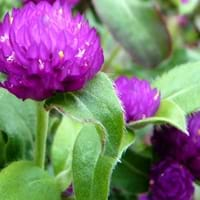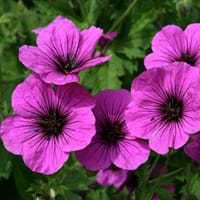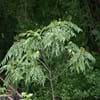Type
Tender Perennial
Tender Perennial
Origin
Central America
Mediterranean, Turkey, Canary Islands, Africa, Southern Africa, Madagascar, South Africa, Iraq, Iran, Western Asia
Types
Ornamental
'Americana Bright Red' geranium, 'Allure Light Pink' geranium, 'Candy Cherry' geranium, 'Elegance Imperial' regal geranium
Number of Varieties
Not Available
Habitat
Tropical regions
Mediterranean region
USDA Hardiness Zone
9-12
12-15
AHS Heat Zone
12 - 1
12-1
Sunset Zone
A1, A2, A3, H1, H2, 1a, 1b, 2a, 2b, 3a, 3b, 4, 5, 6, 7, 8, 9, 10, 11, 12, 13, 14, 15, 16, 17, 18, 19, 20, 21, 22, 23, 24
A2, A3, 1a, 1b, 2a, 2b, 3a, 3b, 4, 5, 6, 7, 8, 9, 10, 11, 12, 13, 14, 15, 16, 17, 18, 19, 20, 21, 22, 23, 24
Habit
Clump-Forming
Clump-Forming
Minimum Height
Not Available
Minimum Width
Not Available
Flower Color
Fuchsia, Violet
White, Red, Purple, Orange, Pink, Rose, Salmon, Orange Red
Flower Color Modifier
Bicolor
Bicolor
Fruit Color
Not Available
Not Available
Leaf Color in Spring
Green, Gray Green
White, Yellow, Red, Green, Purple, Dark Green, Bronze, Orange Red, Ivory
Leaf Color in Summer
Green, Gray Green
White, Yellow, Red, Green, Purple, Dark Green, Bronze, Orange Red, Ivory
Leaf Color in Fall
Green, Gray Green
White, Yellow, Red, Green, Purple, Dark Green, Bronze, Orange Red, Ivory
Leaf Color in Winter
Light Green
Not Available
Leaf Shape
Elliptic
Reniform
Plant Season
Spring, Summer, Fall
Spring, Summer, Fall, Winter
Sunlight
Full Sun
Full Sun, Partial Sun
Type of Soil
Loam, Sand
Loam, Sand
The pH of Soil
Neutral
Neutral
Soil Drainage
Well drained
Well drained
Bloom Time
Early Summer, Summer, Late Summer, Early Fall, Fall
Indeterminate
Tolerances
Drought
Not Available
Where to Plant?
Ground
Container, Ground, Pot
How to Plant?
Seedlings
Grafting, Seedlings, Stem Planting
Plant Maintenance
Medium
Medium
Watering Requirements
Medium
Prefer drip-irrigation instead of Over-head watering, Requires regular watering, Water Deeply, Water twice a day in the initial period
In Summer
Lots of watering
Lots of watering
In Spring
Moderate
Moderate
In Winter
Average Water
Average Water
Soil pH
Acidic, Neutral, Alkaline
Neutral
Soil Type
Loam, Sand
Loam, Sand
Soil Drainage Capacity
Well drained
Well drained
Sun Exposure
Full Sun
Full Sun, Partial Sun
Pruning
Remove damaged leaves, Remove dead branches, Remove dead leaves
Cut or pinch the stems, No pruning needed in the early stages, Prune if you want to improve plant shape, Prune in spring, Prune to stimulate growth, Remove dead or diseased plant parts, Remove shoots
Fertilizers
All-Purpose Liquid Fertilizer
All-Purpose Liquid Fertilizer
Pests and Diseases
Red blotch
Alternaria Leaf Spot, Bacterial Blight, Bacterial Fasciation, Bacterial leaf spot, Blackleg, Botrytis Blight, Edema, Gray mold, Pseudomonas Leaf Spot, Southern Bacterial Wilt, Stem spot, Verticillium Wilt, Viruses
Plant Tolerance
Drought
Drought
Flower Petal Number
Single
Single, Double, Semi-Double
Fragrant Bark/Stem
No
Yes
Foliage Texture
Medium
Medium
Foliage Sheen
Matte
Matte
Attracts
Butterflies
Butterflies
Allergy
Skin irritation
Sinuses, Throat itching
Aesthetic Uses
Borders
Beautification, Bouquets, Showy Purposes, Used for decorating walls, fences, gates, hedges, etc.
Beauty Benefits
Not Available
Not Available
Environmental Uses
Air purification
Air purification
Medicinal Uses
Cough, Diabetes
Antibacterial, Diabetes, Inflammation
Part of Plant Used
Flowers, Leaves
Flowers, Whole plant
Other Uses
Traditional medicine, Used in making tea
Oil is used in perfume, soaps, creams, etc., Used as Ornamental plant, Used for fragrance
Used As Indoor Plant
Yes
Yes
Used As Outdoor Plant
Yes
Yes
Garden Design
Bedding Plant, Container, Cutflower, Dried Flower/Everlasting, Mixed Border
Alpine, Bedding Plant, Container, Edging, Foundation, Hanging Basket, Houseplant, Mixed Border, Rock Garden / Wall, Topiary / Bonsai / Espalier, Tropical
Botanical Name
GOMPHRENA globosa 'Woodcreek Purple'
PELARGONIUM
Common Name
Globe Amaranth
Florist Geranium, Geranium
In Hindi
GOMPHRENA globosa
Geranium
In German
GOMPHRENA globosa
Geranie
In French
GOMPHRENA globosa
Géranium
In Spanish
GOMPHRENA globosa
Geranio
In Greek
GOMPHRENA globosa
γεράνι
In Portuguese
GOMPHRENA globosa
Gerânio
In Polish
GOMPHRENA globosa
Pelargonia
In Latin
GOMPHRENA globosa
Geranium
Phylum
Magnoliophyta
Magnoliophyta
Class
Magnoliopsida
Magnoliopsida
Order
Caryophyllales
Geraniales
Family
Amaranthaceae
Geraniaceae
Clade
Angiosperms, Core eudicots, Eudicots
Angiosperms, Eudicots, Rosids
Tribe
Not Available
Not Available
Subfamily
Not Available
Not Available
Number of Species
Not Available





